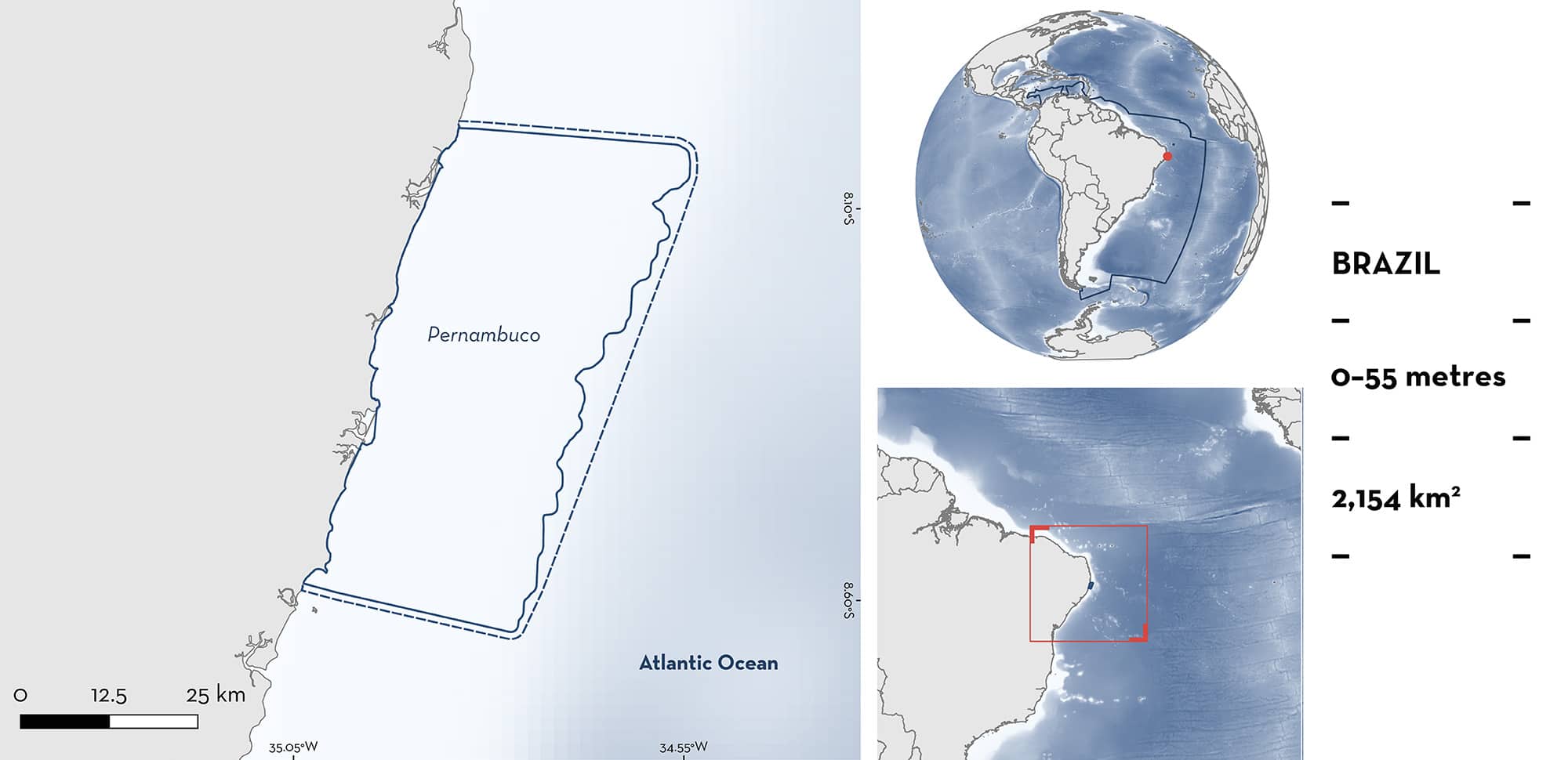ISRA FACTSHEETS
ISRA FACTSHEETS
SOUTH AMERICAN ATLANTIC REGION
Pernambuco
Summary
Pernambuco is located in northeastern Brazil. The area encompasses a relatively flat portion of continental shelf which is characterised by sandy and muddy substrates with calcareous algae. The area is influenced by relatively weak currents. Within this area there are: threatened species, range-restricted species, and reproductive areas (Smalleyed Round Ray Urotrygon microphthalmum).
Download factsheet
Pernambuco
DESCRIPTION OF HABITAT
Pernambuco is located in northeastern Brazil. The area encompasses a relatively flat portion of continental shelf from Jaboatão dos Guararapes to Barra de Sirinhaém. It is characterised by sandy and muddy substrates with calcareous algae (Kempf 1970). The shelf is mostly influenced by tropical water, with coastal water near the inner shelf around this area. The area is also influenced by weak currents without direction in austral summer, which strengthen and become stronger towards the north in winter. The salinity levels and mean temperature are relatively similar between summer and winter (Domingues et al. 2017).
This Important Shark and Ray Area is benthic and pelagic and delineated from inshore waters (0 m) to a depth of 55 m based on the global depth range of the Qualifying Species.
CRITERION A
VULNERABILITY
One Qualifying Species considered threatened with extinction according to the IUCN Red List of Threatened Species regularly occurs in the area. This is the Critically Endangered Smalleye Round Ray (Pollom et al. 2019).
CRITERION B
RANGE RESTRICTED
This area holds the regular presence of Smalleye Round Ray as a resident range-restricted species. Smalleye Round Ray have been recorded in the area as incidental catch from shrimp trawl fisheries between February 2010–January 2014 (Santander‐Neto et al. 2016; J Santander‐Neto unpubl. data 2025). Individuals of multiple life stages (including neonates, pregnant females, and post-partum animals) are regularly and predictably reported from this area. This is the only known area in Brazil where this species is regularly and predictably observed. This species occurs only in the North Brazil Shelf Large Marine Ecosystem (LME), the East Brazil Coast LME, and marginally in the Caribbean Sea LME.
CRITERION C
SUB-CRITERION C1 – REPRODUCTIVE AREAS
Pernambuco is an important reproductive area for one ray species.
Between February 2010 and January 2014, 361 Smalleye Round Rays were captured in this area as incidental catch from shrimp trawl fisheries (Santander‐Neto et al. 2016), measuring between 4.7–15.4 cm disc width (DW) (J Santander‐Neto unpubl. data 2025). Of these, 41 animals (11.6%) were considered neonates measuring <8.2 cm DW. The size-at-birth for this species is 8 cm DW (Last et al. 2016). Neonate Smalleye Round Rays were caught in 2010 (n = 21), 2011 (n = 10), and 2014 (n = 1), and the year-of-capture was not recorded for nine animals. This area is important for reproductive purposes year-round, as neonate/YOY animals were caught in all months (J Santander‐Neto unpubl. data. 2025). Additionally, 59 pregnant females were caught across 2010, 2012, and 2013. Throughout the entire survey period, 59 animals were in the post-partum stage (J Santander-Neto unpubl. data. 2025). This is the only known area in Brazil with regular observations of this species at these life stages.
Download factsheet
SUBMIT A REQUEST
ISRA SPATIAL LAYER REQUEST
To make a request to download the ISRA Layer in either a GIS compatible Shapefile (.shp) or Google Earth compatible Keyhole Markup Language Zipped file (.kmz) please complete the following form. We will review your request and send the download details to you. We will endeavor to send you the requested files as soon as we can. However, please note that this is not an automated process, and before requests are responded to, they undergo internal review and authorization. As such, requests normally take 5–10 working days to process.
Should you have questions about the data or process, please do not hesitate to contact us.


